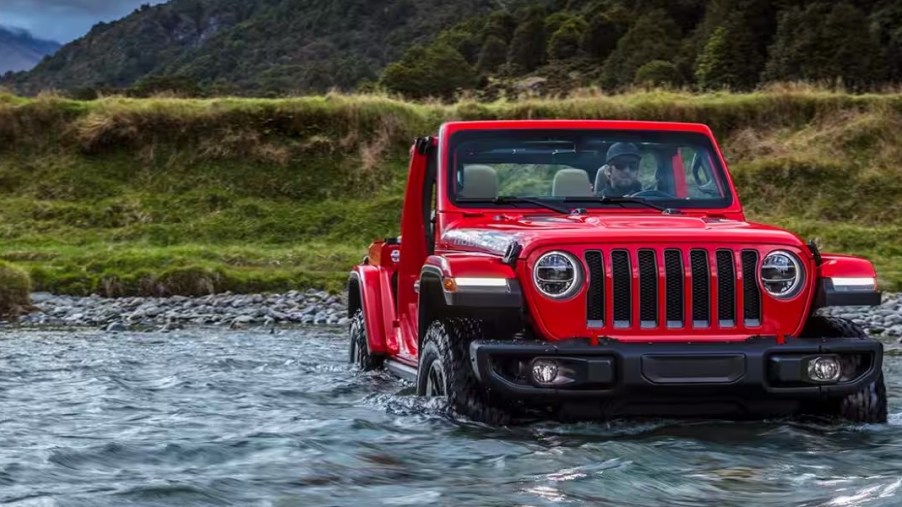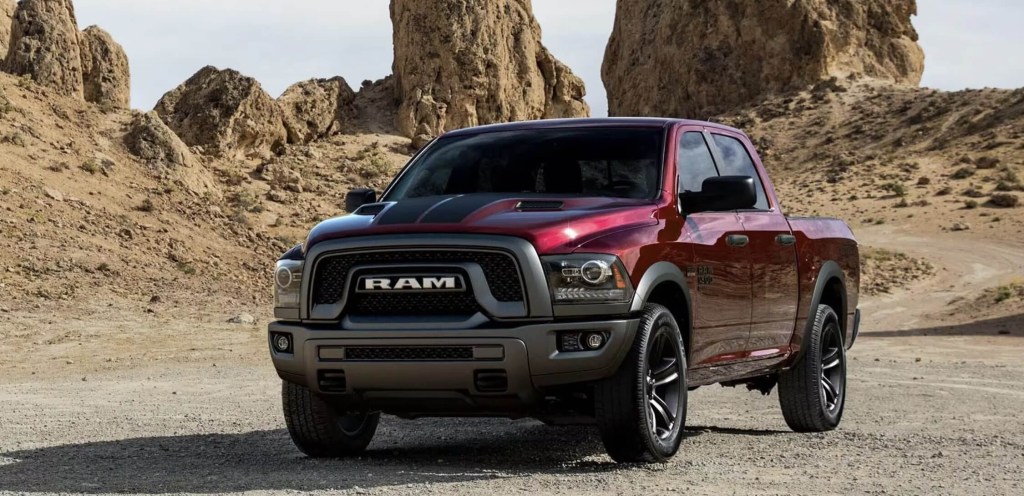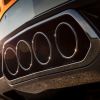
Jeep Parent Company Might Limit Allocations of Gas-Only Cars in 14 States
Stellantis, the parent company behind the Jeep brand, is looking to drastically limit the shipping of gas-only vehicles to 14 states. The 14 states soon to be taking part in California Air Resource Board‘s vehicle emissions rules could hit Stellantis hard.
Why can’t stellantis ship gas-powered vehicles to these states?
Stellantis might still still ship cars to these states. It is difficult to understand exactly what this will mean for dealer allocations in the affected states.
This massive shift is due to something called a CARB rule. CARB rules determine how an automotive company’s environmental impact is measured. While Stellantis isn’t alone in this predicament, the Jeep brand owner is getting worked by this developing situation harder than most due to its remaining lineup of gas-powered cars and some unfortunate timing.
There are five major companies that get their fleet emissions measured by CARB based on nationwide sales; BMW, Volkswagen, Volvo, Honda, and Ford. However, the rest of the carmakers out there get their emissions measured by CARB in states that follow the California Air Resource Board’s rules. Therein lies the problem for Stellantis.
Mayne clarified why Stellantis isn’t a part of the CARB crew:
“Shortly after Stellantis was formed, we approached California about joining the ‘framework’ negotiated by our competitors so we could comply with California regulations based on our nationwide sales. We were informed that California was not allowing any new companies into the framework,” Mayne said. “The ultimate solution rests with a program that allows compliance based on sales in all 50 states.”
Stellantis’ best solution might be to stop sending vehicles to those 14 states unless a customer has ordered one, or at least significantly limit the allotments. Automotive News reports that nearly 36% of Americans live in these CARB states. That percentage represents over 100 million people. Dealers will likely struggle in these states, but as the past two years have shown, enough customers are willing to wait for the right car. While some may wait, rest assured that many buyers will likely travel to non-CARB states to buy.
What are CARB states?
There are 14 CARB states. Depending on where you live in the country, it could be difficult to reach a non-CARB state. The entire west coast abides by the CARB rules.
Traveling to another state from one of these west coast states could take some time. The east coast is also a block of CARB states once you get north of Maryland, with the exception of New Hampshire. Virginia, New Mexico, Nevada, and Arizona plan to follow the CARB rules soon, too. It’s clear that gas-powered cars under any brand designation could soon become more difficult to acquire – especially in these states.
What brands does Stellantis own?
Stellantis is one of the companies trailing behind in the great electrification. If you look at the brands that Stellantis owns, you won’t find many California-friendly brands. Stellantis owns Dodge, the Jeep brand, and its sub-brand Wagoneer, Alfa Romeo, Chrysler, Ram trucks, Maserati, Citroen, Lancia, Opel, Abarth, Vauxhall, and Fiat.
That said, Stellantis does have plans for an electrified future, aiming for electrified models to make up 50% of its U.S. sales by the end of the decade.
Why is Stellantis having trouble shipping gas-powered cars?

Even though this CARB rule won’t take effect until 2026, the CARB rules are being applied retroactively. Because Stellantis brands remain faithful to the gas-power cars its consumers love and have prudently taken time in the movement toward electrification in the U.S., the company is having to navigate these restrictions.
Many companies have vowed to stop selling cars with ICE powertrains within the next 5-10 years. This promise comes with billions of dollars in R&D, rebranding, and new factories. These companies like Volvo and Kia are preparing for what feels like a paradigm shift coming down the pipe. Although we must admit seeing these changes begin to take shape feels surprising despite the plans. Maybe we didn’t think it would actually happen.



